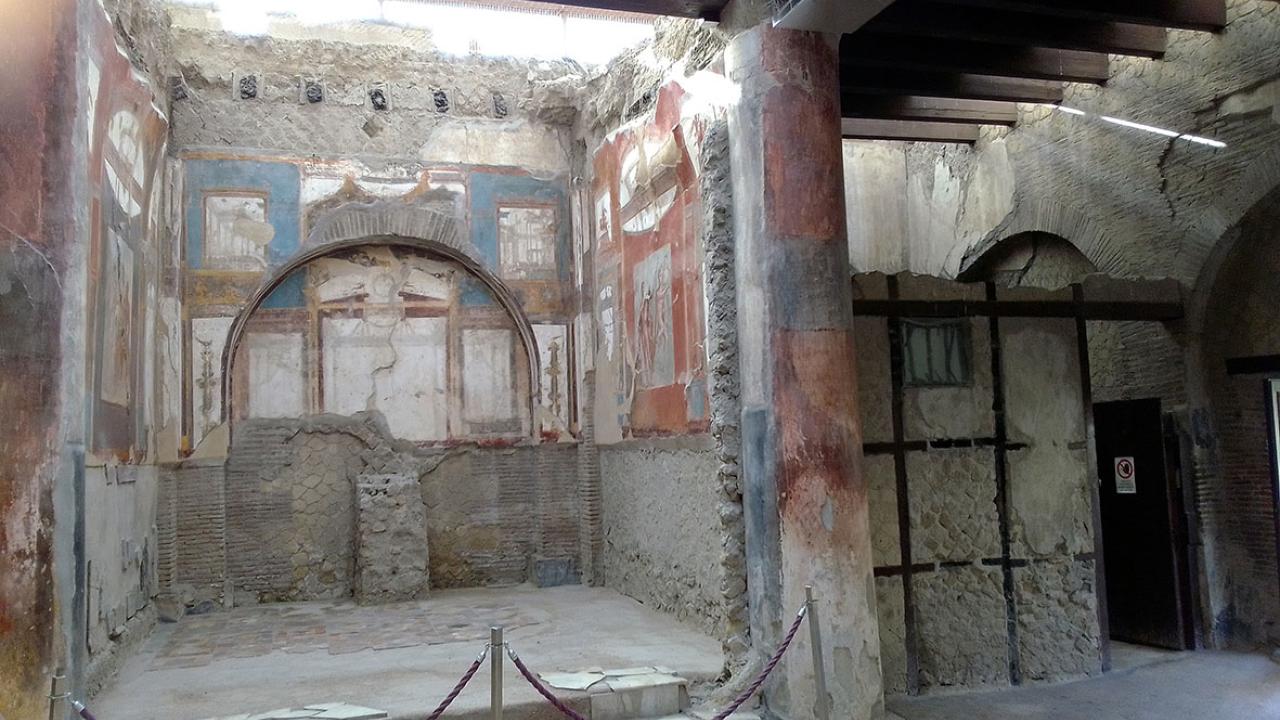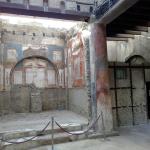
Abstract
Detecting the ultrastructure of brain tissue in human archaeological remains is a rare event that can offer unique insights into the structure of the ancient central nervous system (CNS). Yet ancient brains reported in the literature show only poor preservation of neuronal structures. Using scanning electron microscopy (SEM) and advanced image processing tools, we describe the direct visualization of neuronal tissue in vitrified brain and spinal cord remains which we discovered in a male victim of the AD 79 eruption in Herculaneum. We show exceptionally well preserved ancient neurons from different regions of the human CNS at unprecedented resolution. This tissue typically consists of organic matter, as detected using energy-dispersive X-ray spectroscopy. By means of a self-developed neural image processing network, we also show specific details of the neuronal nanomorphology, like the typical myelin periodicity evidenced in the brain axons. The perfect state of preservation of these structures is due to the unique process of vitrification which occurred at Herculaneum. The discovery of proteins whose genes are expressed in the different region of the human adult brain further agree with the neuronal origin of the unusual archaeological find. The conversion of human tissue into glass is the result of sudden exposure to scorching volcanic ash and the concomitant rapid drop in temperature. The eruptive-induced process of natural vitrification, locking the cellular structure of the CNS, allowed us to study possibly the best known example in archaeology of extraordinarily well-preserved human neuronal tissue from the brain and spinal cord.
Authors
Pierpaolo Petrone - Conceptualization, Data curation, Formal analysis, Investigation, Methodology, Supervision, Validation - Dipartimento di Scienze Biomediche Avanzate, Università di Napoli Federico II, Naples, Italy
Guido Giordano - Formal analysis - Dipartimento di Scienze, Università degli Studi Roma Tre, Rome, Italy
Elena Vezzoli - Data curation, Formal analysis - Dipartimento di Scienze Biomediche per la Salute, Università di Milano, Milan, Italy
Alessandra Pensa - Data curation, Formal analysis - Dipartimento di Scienze, Università degli Studi Roma Tre, Rome, Italy
Giuseppe Castaldo - Data curation, Formal analysis - CEINGE Biotecnologie Avanzate Scarl, Naples, Italy
Vincenzo Graziano - Data curation, Formal analysis - Dipartimento di Scienze Biomediche Avanzate, Università di Napoli Federico II, Naples, Italy
Francesco Sirano - Formal analysis, Investigation - Parco Archeologico di Ercolano, Ercolano, Naples, Italy
Emanuele Capasso - Data curation, Formal analysis - Dipartimento di Scienze Biomediche Avanzate, Università di Napoli Federico II, Naples, Italy
Giuseppe Quaremba - Data curation, Formal analysis - Dipartimento di Scienze Biomediche Avanzate, Università di Napoli Federico II, Naples, Italy, Dipartimento di Ingegneria Industriale, Università di Napoli Federico II, Naples, Italy
Alessandro Vona - Formal analysis - Dipartimento di Scienze, Università degli Studi Roma Tre, Rome, Italy
Maria Giuseppina Miano - Data curation, Formal analysis - Istituto di Genetica e Biofisica "Adriano Buzzati-Traverso”, Consiglio Nazionale delle Ricerche (CNR), Naples, Italy
Sergio Savino - Data curation, Formal analysis - Dipartimento di Ingegneria Industriale, Università di Napoli Federico II, Naples, Italy
Massimo Niola - Data curation, Formal analysis - Dipartimento di Scienze Biomediche Avanzate, Università di Napoli Federico II, Naples, Italy




